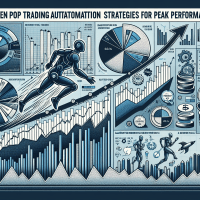Prop Trading Drawdown: Strategic Risk & Backtesting
Prop trading firms thrive on the ability to manage risk while maximizing returns. Central to this discipline is controlling drawdown levels, a challenge often amplified by rapid market fluctuations. In this article, we explore advanced strategies to manage prop trading drawdown, including sophisticated backtesting techniques and tool comparisons which help both retail traders and institutional teams to stay ahead.
Understanding Drawdown in Prop Trading
Drawdown in prop trading refers to the peak-to-trough decline during a specified period. It is a crucial metric for risk managers, traders, and quants, as it reflects potential losses and informs strategic decision-making. Key performance metrics such as the Sharpe ratio, profit factor, and maximum drawdown limits are used to evaluate strategy robustness and efficiency.

Figure 1: A detailed backtesting report screenshot highlighting drawdown management metrics from TradingView.
Advanced Backtesting: Best Practices for Prop Trading
Effective backtesting is essential to avoid pitfalls such as overfitting, survivorship bias, and look-ahead bias. Traders should adopt both traditional and walk-forward optimization techniques to simulate real market conditions. Out-of-sample testing, followed by paper trading, further validates strategy performance before live deployment.
Key Pitfalls in Backtesting
- Overfitting: Excessive parameter tuning can lead to models that perform well in historical data but fail in live markets.
- Survivorship Bias: Data sets that exclude companies no longer active may skew results.
- Data Quality Issues: Ensure data reliability by using reputable sources for tick or bar data, and adjust for corporate actions.
Walk-Forward Optimization vs. Traditional Backtesting
While traditional backtesting evaluates a strategy on historical data, walk-forward optimization divides data into multiple segments. This method updates parameters in real time, enhancing model robustness and avoiding look-ahead bias. For prop trading environments, the automated parameter optimization available in platforms like MetaTrader 5 or NinjaTrader can be a game changer.
Comparing Leading Automated Backtesting Tools
Modern prop trading necessitates the use of sophisticated backtesting platforms. Below is a comparison of some widely-recognized tools:
| Tool | Backtesting Features | Data Quality | Integration | Pricing & Use Cases |
|---|---|---|---|---|
| TradingView | Vectorized testing, scenario analysis, commission/slippage handling | Extensive historical data across asset classes | Broker integration via API, social trading features | Free tier available; scalable for prop firms and individual traders |
| MetaTrader 5 | Automated backtesting with optimization, stress testing | High-quality tick and bar data | Deep broker integration; supports EA development | Accessible to both retail and prop trading environments |
| NinjaTrader | Event-driven backtesting, real-time optimization | Robust historical data feeds | API support, broker and third-party plugin compatibility | Flexible pricing structures suitable for team collaboration |
| QuantConnect | Algorithmic backtesting with automated parameter tuning | Deep historical data across equities, forex, and crypto | API access, integration with Microsoft Azure and other analytics platforms | Free with community access; premium options for advanced teams |
Case Study: Overcoming Drawdown Challenges in a Prop Firm
One established prop trading firm faced recurring challenges with managing high drawdown during volatile market phases. The team integrated NinjaTrader’s automated backtesting module with a walk-forward strategy. By automating parameter optimization and integrating out-of-sample testing, the firm reduced drawdown by 20%, while enhancing the Sharpe ratio from 1.2 to 1.5 over a 12-month period.
Integrating Automated Backtesting with Live Trading
Successful trading strategies transition smoothly from backtesting to paper trading before live deployment. Here is an example for automating this integration with Backtrader using Python:
import backtrader as bt
class TestStrategy(bt.Strategy):
def __init__(self):
self.dataclose = self.datas[0].close
def next(self):
if not self.position:
if self.dataclose[0] < self.dataclose[-1]:
# Example condition: enter a buy order
self.buy()
else:
if self.dataclose[0] > self.dataclose[-1]:
self.sell()
cerebro = bt.Cerebro()
cerebro.addstrategy(TestStrategy)
# Data feed integration code here
cerebro.run()
Figure 2: An interactive interface from MetaTrader 5 detailing backtesting outcomes and parameter optimization results.
Expert Guidance on Risk Management and Drawdown Mitigation
Risk management is at the core of prop trading strategy development. Expert traders recommend:
- Regularly update backtesting models: Periodically revisiting your backtested strategies ensures they remain relevant in changing market dynamics.
- Utilize multiple data sources: Cross-verification of data minimizes errors and enhances strategy fidelity.
- Adopt walk-forward and out-of-sample testing: This prevents overfitting and improves live trading performance.
Pro Tip: Integrating Backtesting with Risk Controls
Implement a tiered risk management approach where max daily loss and overall drawdown limits are enforced. For instance, combining NinjaTrader’s real-time alerts with TradingView’s custom scripting can provide instant notifications when thresholds are breached.
Regulatory Context and Compliance in Prop Trading
With increasing regulatory scrutiny from frameworks like MiFID II, ESMA regulations, and NFA rules, prop trading firms must align strategy development with disclosure and compliance requirements. Incorporating compliance modules within backtesting platforms helps ensure that risk management strategies are both regulatory-compliant and robust.
Internal Resources and Next Steps
For further insights into prop trading drawdown management, consider exploring our in-depth articles on risk management techniques and advanced backtesting methodologies.
We recommend checking out our detailed Prop Trading Risk Management guide and the comprehensive Advanced Backtesting Tools Comparison to further enhance your trading strategies.
As of October 2023, these strategies are proven to help prop traders reduce drawdown and optimize their risk-adjusted returns. Stay ahead of the curve by continuously updating your methods and tools to adapt to market changes.
If you found these insights valuable, subscribe to our newsletter for the latest prop trading strategies, case studies, and expert guidance curated specifically for trading professionals.







